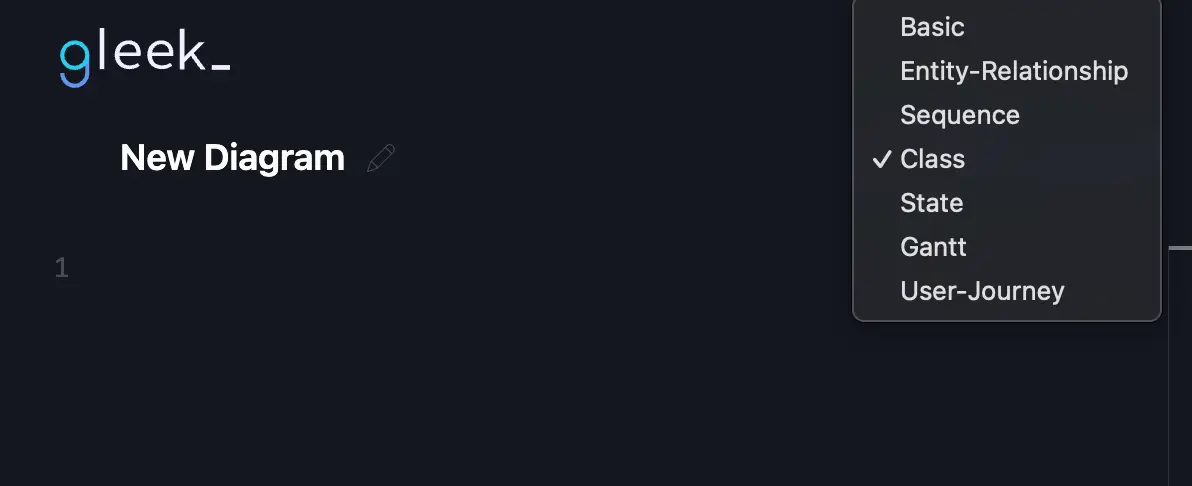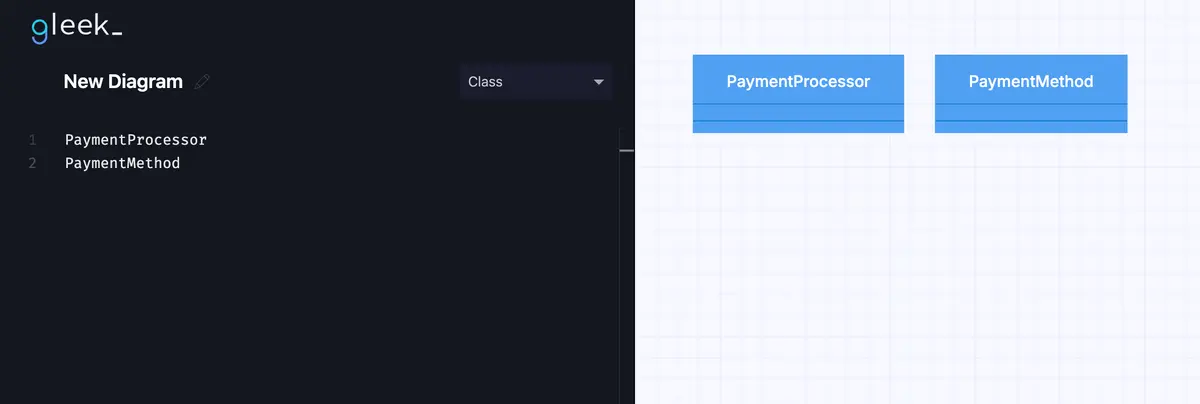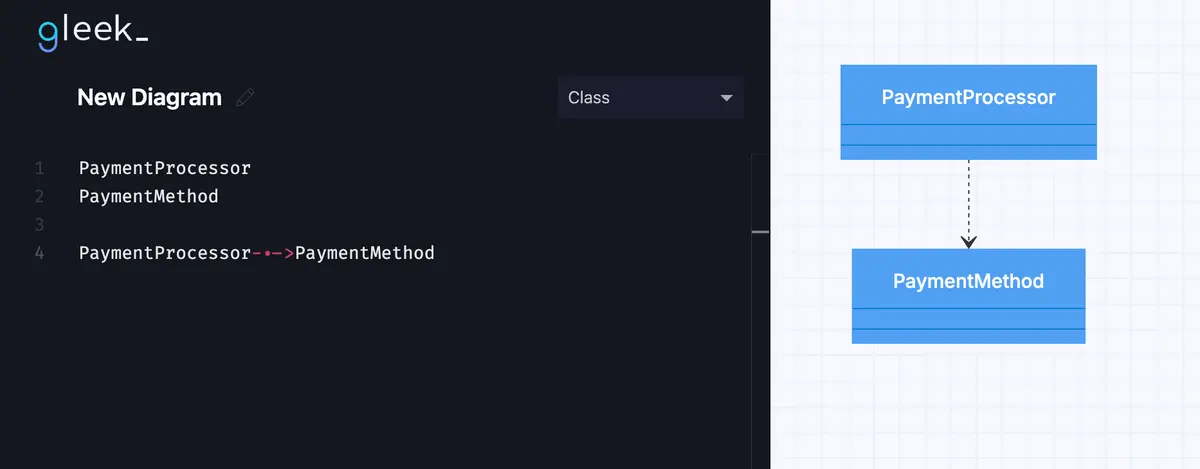UML is a comprehensive modeling language that standardizes methods for visualizing, specifying, constructing, and documenting software system components. Within this framework, UML dependency in class diagrams is important for illustrating relationships where one element relies on another. Recognizing these dependencies enables software designers to effectively manage interactions and interdependencies, supporting structured and efficient system architecture.
This article explores the nature of UML dependencies, defining them in the context of UML and examining their significance in system modeling. Accurate depiction of these dependencies is critical for maintaining clarity and long-term sustainability within complex software systems. As we proceed, the following sections will explore different dependency types, strategies for supporting modular and scalable design, and practical applications, each building on the last to provide a holistic understanding of UML dependencies.
Types of UML Dependencies and Their Significance
In UML, dependencies are vital for defining how elements within a system interact and rely on each other. Understanding the various types of dependencies helps developers craft a more resilient and maintainable architecture. Several key types of UML dependencies include usage dependencies, abstraction, realization, and refinement.
Usage Dependencies: The most basic type, this occurs when one element relies on another to function. For example, if a class method calls another class’s method, a usage dependency exists. Understanding these dependencies allows developers to anticipate the impact of changes on dependent elements, guiding critical design choices.
Abstraction: Linking a general element to a more specific implementation, such as an interface to concrete classes like
CreditCardPaymentorPayPalPayment, fosters flexibility. This type enables system adaptability, so specific implementations can evolve without impacting the general structure.Realization and Refinement: Realization occurs when a class implements an interface, providing a concrete form for specified behaviors. Refinement bridges a detailed element with an abstract one, such as in iterative development where high-level models evolve into detailed designs. These types play a critical role in maintaining structure throughout development and support iterative improvements in design.
Make your own UML class diagram with Gleek.
Each dependency type influences design choices, making UML dependencies indispensable for structuring systems that adapt well to changes. To better support scalability and modularity, let’s explore how UML dependencies help manage these requirements in software architecture.
How UML Dependencies Support Modular and Scalable Design
Achieving modularity and scalability is essential in software development, and UML dependencies contribute significantly to this goal. By defining relationships and dependencies clearly, UML enables developers to organize systems into independent modules, reducing the risks associated with high interdependency. This separation simplifies updates, testing, and maintenance, as changes in one module have minimal impact on others. Clear dependency management helps avoiding tight coupling, which can otherwise make systems rigid and challenging to maintain.
Read on different UML relationship types, such as Inheritance, Association, Multiplicity, Aggregation, and Composition.
Effective dependency management is necessary to maintaining system flexibility. Best practices include creating abstraction layers to decouple high-level structures from low-level details, promoting component interchangeability. Tools like dependency injection also help minimize coupling by enabling easier modifications, making the system adaptable to future changes. With these techniques, developers can build software architectures that are sustainable and scalable, ready to handle evolving requirements. Real-world applications illustrate the importance of dependency relationships for this purpose, which we’ll discuss in the next section.
Using UML Dependency Relationships in Real-World Scenarios
UML dependency relationships in class diagrams serve as powerful tools for teams to visualize and manage relationships and dependencies within their projects. Here are some practical scenarios where these diagrams are invaluable:
Application Development: During the initial stages of application development, dependency relationships help teams map out interactions between various components. By illustrating how different modules depend on each other, developers can identify potential bottlenecks and design the architecture in a way that minimizes interdependencies, promoting a cleaner, more modular structure that facilitates easier implementation and future scalability.
Refactoring Projects: When undertaking a refactoring project, developers use dependency relationships to pinpoint areas of tight coupling that require simplification. These relationships provide a clear visual representation of existing dependencies, enabling teams to systematically address complexity by breaking down monolithic code structures into more manageable and independent components. This process not only enhances code readability but also streamlines future maintenance efforts.
Feature Scaling: As new features are integrated into an existing system, dependency relationships assist in understanding the potential impact on current functionalities. By visualizing these dependencies, teams can anticipate how new elements will interact with existing components, allowing for more informed decision-making. This foresight helps in planning the scaling of features without disrupting the existing codebase.
In each scenario, dependency relationships enhance the design and execution of complex systems, supporting teams in identifying bottlenecks and maintaining clarity within the architecture. To create effective dependency relationships that keep up with changing requirements, Gleek offers a specialized solution, which we’ll discuss next.
Make your own UML class diagram with Gleek.
Creating UML Dependency Diagrams with Gleek
Gleek is an innovative tool designed to simplify the creation of UML dependency relationships, making it an ideal choice for developers working with complex systems. Team members can share diagram links with colleagues, allowing each person to make individual edits. This way everyone can contribute to the project's development, maintaining alignment and reducing the risk of miscommunication. Additionally, Gleek offers a variety of customizable templates that cater to different project needs, allowing users to tailor diagrams to specific requirements. Its user-friendly interface ensures that even those new to UML can start creating sophisticated diagrams with ease.
Gleek’s adaptability is a significant advantage when building accurate dependency relationships in class diagrams. As project requirements evolve, Gleek makes it easy to update and modify diagrams, ensuring they remain relevant and useful throughout the development process. Here’s a simple step-by-step guide to creating a UML dependency relationship in Gleek:
Start a New Diagram: Open Gleek, click on "New Diagram," and select the class diagram from the dropdown to get started.

Add Components: Use the intuitive code-to-diagram interface to add classes representing different parts of your system.

Define Relationships: Establish dependency relationships between classes by using Gleek’s dependency arrow symbol, “-.->”, which accurately represents the dependency within the class diagram. For instance, if a
PaymentProcessorclass depends on aPaymentMethodinterface for credit card or PayPal payments, this dependency arrow can clearly illustrate the relationship.

Adapt and Refine: As the project progresses, easily update the diagram to reflect changes in the architecture or dependencies, ensuring your diagram remains an accurate representation of your system.
With these simple steps, Gleek helps teams to make their software architecture design process more efficient, making it an invaluable tool for creating organized and precise UML dependency relationships in class diagrams.
Start using Gleek today to efficiently map out and manage dependencies, ensuring your software designs are well-structured, resilient, and prepared to evolve alongside your development needs.
Related posts
Mastering inheritance in class diagrams
Restaurant management system class diagram from scratch
What is multiplicity in a class diagram?
How do we create a Class diagram for a Library Management system?
